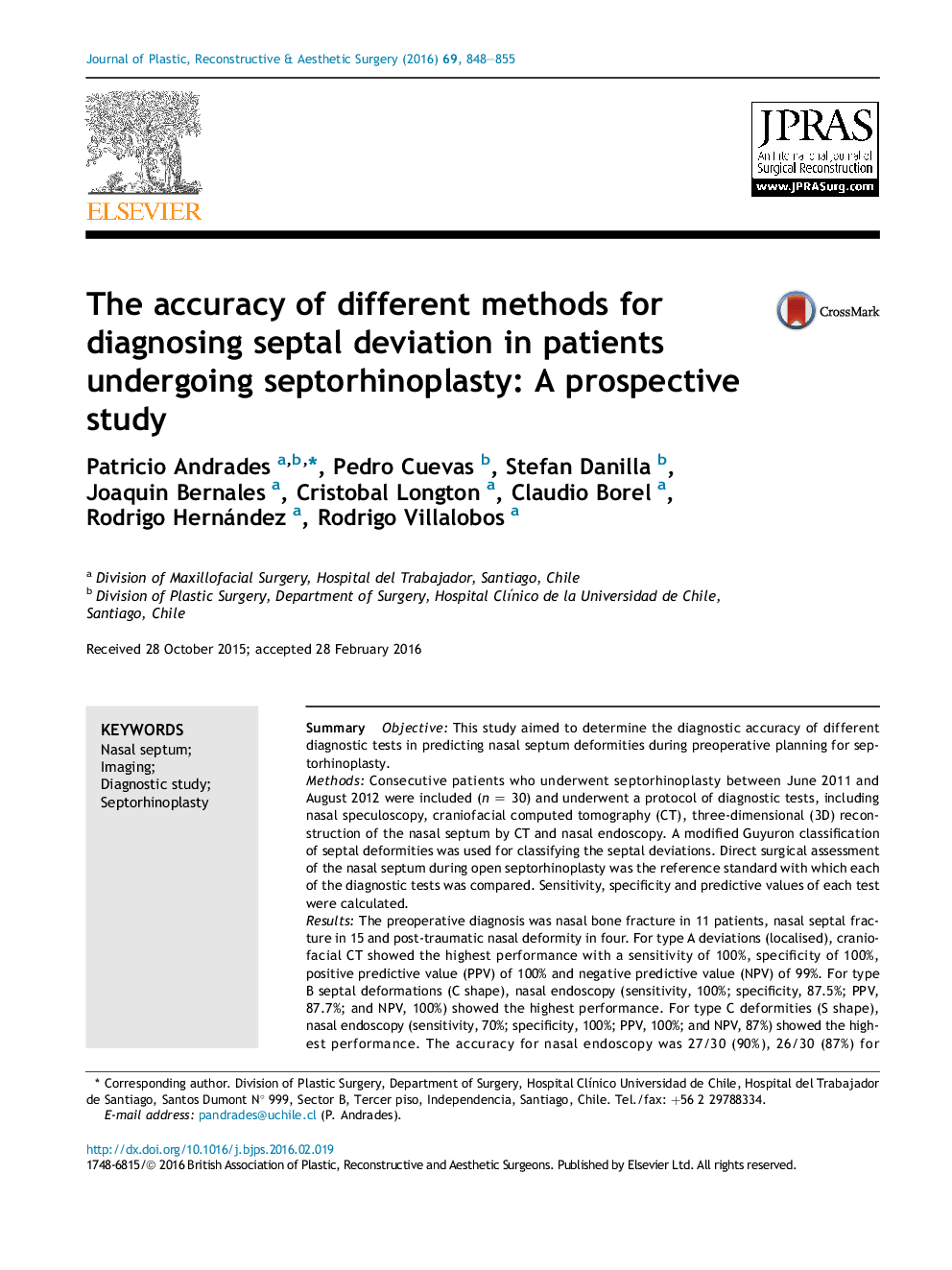| کد مقاله | کد نشریه | سال انتشار | مقاله انگلیسی | نسخه تمام متن |
|---|---|---|---|---|
| 4117226 | 1270299 | 2016 | 8 صفحه PDF | دانلود رایگان |
SummaryObjectiveThis study aimed to determine the diagnostic accuracy of different diagnostic tests in predicting nasal septum deformities during preoperative planning for septorhinoplasty.MethodsConsecutive patients who underwent septorhinoplasty between June 2011 and August 2012 were included (n = 30) and underwent a protocol of diagnostic tests, including nasal speculoscopy, craniofacial computed tomography (CT), three-dimensional (3D) reconstruction of the nasal septum by CT and nasal endoscopy. A modified Guyuron classification of septal deformities was used for classifying the septal deviations. Direct surgical assessment of the nasal septum during open septorhinoplasty was the reference standard with which each of the diagnostic tests was compared. Sensitivity, specificity and predictive values of each test were calculated.ResultsThe preoperative diagnosis was nasal bone fracture in 11 patients, nasal septal fracture in 15 and post-traumatic nasal deformity in four. For type A deviations (localised), craniofacial CT showed the highest performance with a sensitivity of 100%, specificity of 100%, positive predictive value (PPV) of 100% and negative predictive value (NPV) of 99%. For type B septal deformations (C shape), nasal endoscopy (sensitivity, 100%; specificity, 87.5%; PPV, 87.7%; and NPV, 100%) showed the highest performance. For type C deformities (S shape), nasal endoscopy (sensitivity, 70%; specificity, 100%; PPV, 100%; and NPV, 87%) showed the highest performance. The accuracy for nasal endoscopy was 27/30 (90%), 26/30 (87%) for craniofacial CT, 22/30 (73%) for 3D reconstruction and 10/28 (36%) for speculoscopy.ConclusionsNasal endoscopy and craniofacial CT were more accurate and precise than nasal speculoscopy and 3D reconstruction for preoperative evaluation of the nasal septum, thus enabling more appropriate surgical planning for septorhinoplasty.
Journal: Journal of Plastic, Reconstructive & Aesthetic Surgery - Volume 69, Issue 6, June 2016, Pages 848–855
